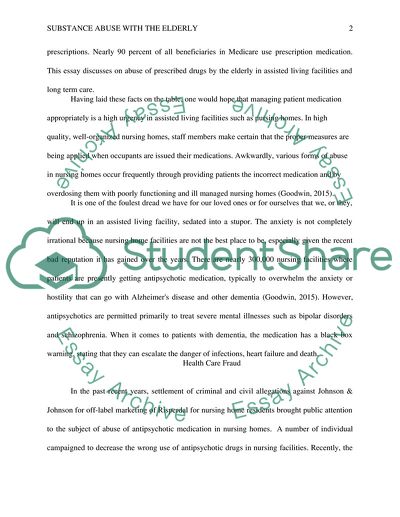Cite this document
(Substance Abuse with the Elderly in Assisted Living Facilities Research Paper, n.d.)
Substance Abuse with the Elderly in Assisted Living Facilities Research Paper. Retrieved from https://studentshare.org/nursing/1866808-substance-abuse-with-the-elderly-in-assisted-living-facilities-and-long-term-care
Substance Abuse with the Elderly in Assisted Living Facilities Research Paper. Retrieved from https://studentshare.org/nursing/1866808-substance-abuse-with-the-elderly-in-assisted-living-facilities-and-long-term-care
(Substance Abuse With the Elderly in Assisted Living Facilities Research Paper)
Substance Abuse With the Elderly in Assisted Living Facilities Research Paper. https://studentshare.org/nursing/1866808-substance-abuse-with-the-elderly-in-assisted-living-facilities-and-long-term-care.
Substance Abuse With the Elderly in Assisted Living Facilities Research Paper. https://studentshare.org/nursing/1866808-substance-abuse-with-the-elderly-in-assisted-living-facilities-and-long-term-care.
“Substance Abuse With the Elderly in Assisted Living Facilities Research Paper”, n.d. https://studentshare.org/nursing/1866808-substance-abuse-with-the-elderly-in-assisted-living-facilities-and-long-term-care.


